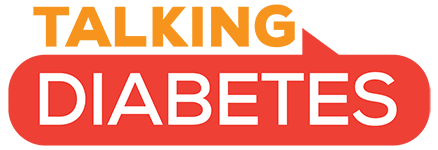Fighting COVID-19 with the Global Diabetes Community
Living with diabetes is hard work. The global outbreak of the novel coronavirus (COVID-19) has added new challenges, fears, and uncertainties. Members of the diabetes community are among the most vulnerable to serious complications caused by coronavirus.
Yet, there’s some good news: people with diabetes – Type 1 or Type 2 – understand that our daily actions and habits add up. Every action to curb the spread of the virus represents countless infections prevented.
Take these precautions and encourage your community to join you. The recommendations have been endorsed by The American Diabetes Association, Beyond Type 1, Harvard Medical School, ISPAD, and JDRF and are being shared by diabetes communities around the world to keep the most vulnerable among us safe.
Establish and maintain strict personal hygiene
- Wash hands every time you come into contact with an out-of-home item or place
- Regularly disinfect high-touch surfaces in your home
- Avoid touching your face
- Cough or sneeze into your elbow or a handkerchief
- Act as though you have COVID and could pass it on
Minimize physical interaction with others
- Minimize contact with individuals outside your household
- Secure a sufficient amount of food, supplies, and medication to minimize trip frequency as your budget allows; get items delivered, if you can
- Seek routine medical care from home: utilize telehealth and mail-order pharmacy options
Minimize risk when out in public
- Maintain a distance of at least 6 feet from others
- Wear a cloth mask or face covering
- Adjust schedule to avoid busy times in public places; take advantage of dedicated shopping times for vulnerable individuals, if available
Make work as safe as possible
- Work from home as much as you can. Look into modifications in work procedures to keep 6 feet distance from others. Adjust your schedule to avoid high-traffic times.
- As physical distance rules are lifted, advocate for flexible work options for high-risk individuals
Maximize baseline physical and mental health
- If you smoke or vape, stop now
- Prioritize rest, hydration, nutrition, physical activity, and virtually socializing with others
- Exercise inside or in isolated areas
- If you are struggling with mental health, seek professional help available online
Set yourself up for success with diabetes management
- Test blood sugar levels more often; your body may be reacting differently under these new circumstances
- Familiarize yourself with how to check for ketones. Check for ketones regularly, regardless of blood sugar levels.
- Secure a sufficient amount of supplies, including ketone strips and severe hypoglycemia treatment (glucagon)
- Maintain a routine of physical movement and blood-sugar-friendly eating
- Contact your doctor or health professionals by phone/telehealth if possible, for diabetes management questions and concerns
- Lean on your community for help and support; look into digital and online communities
If you get sick, get treated quickly
- Measure temperature daily with a thermometer and take heart rate with a watch – track any changes
- Never stop taking insulin or other medications, even when you become sick. Discuss insulin dosage changes with a doctor.
- Know the warning signs of diabetic ketoacidosis (DKA) and seek immediate medical attention for symptoms including fruity smelling breath, vomiting, weight loss, dehydration, confusion, and hyperventilation
Not everyone is able to take every precaution, but every precaution you can take makes a difference. If you have diabetes and contract COVID-19, contact your healthcare professional immediately.
Sources:

